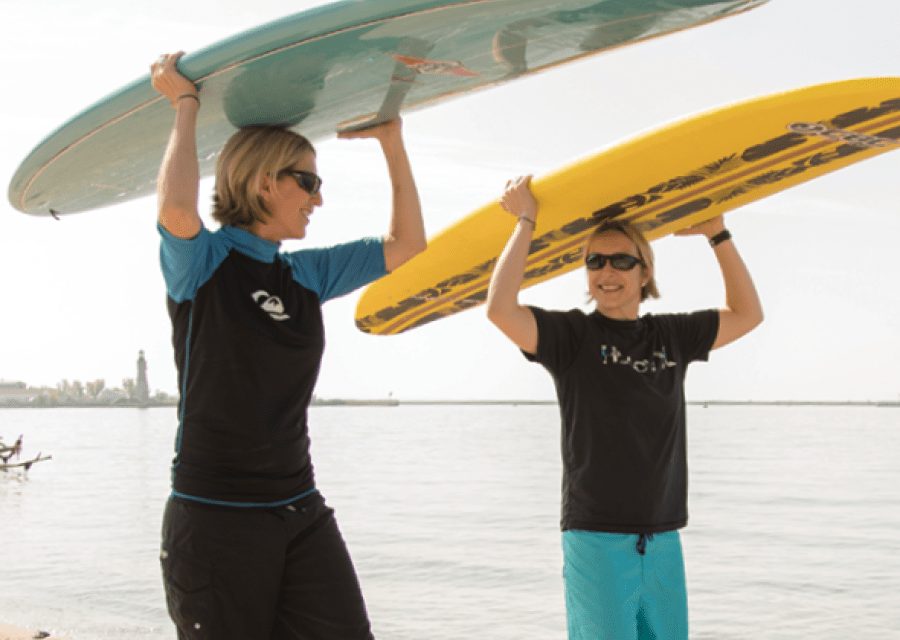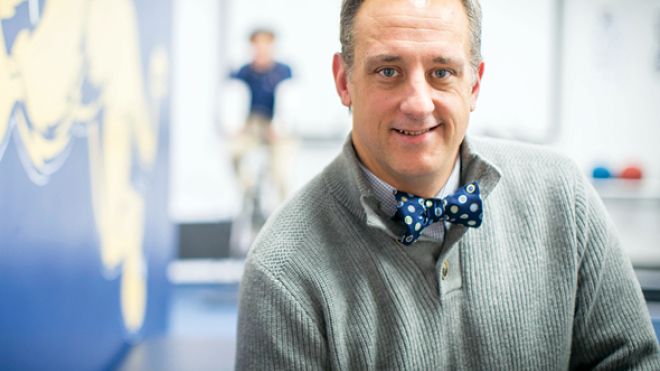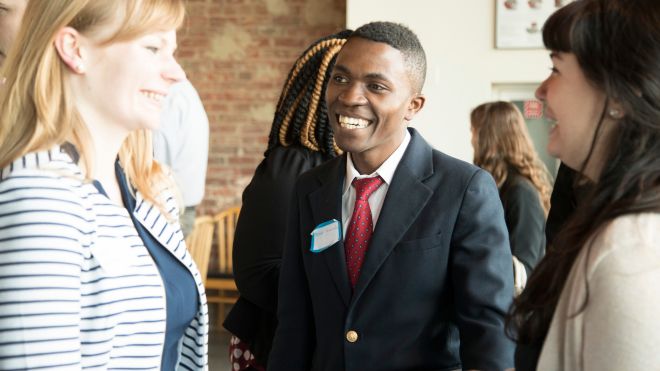
BUFFALO, NY - Lauren K. Cavanaugh, PhD and Sara B. Rademacher MS ’18 aren’t your stereotypical surfers. They didn’t grow up with a beach in their backyard. Their days don’t revolve around the latest wind and weather forecast. And ‘gnarly’ isn’t in their vernacular, unless perhaps they’re cheering on the children in their surf camp.
The pair co-direct Learning Through Sun, Sand and SURF. The summer program, held on the shores of Mustang Island in Port Aransas, TX, is having waves of impact on children with autism spectrum disorder (ASD).
“The goal is to improve social skills and provide multisensory experiences to children with ASD through surfing,” Rademacher explains.
One of every 88 children in the U.S. is diagnosed with ASD according to the Centers for Disease Control and Prevention. The severity of symptoms varies from mildly impaired to severely disabled but the hallmarks of the disorder are the same: difficulty with social-emotional interaction, communication and behavior. Children with ASD also struggle with sensory processing, a condition in which the brain is oversensitive to sights, sounds and smells.
Helping to mitigate these core symptoms are the healing powers of the ocean.
“Children who participate exhibit an increase in self-confidence, self-reliance, self-management and social engagement,” says Cavanaugh, assistant professor of kinesiology. “These are skill sets that will help them focus in the classroom and live a better quality of life.”
Cavanaugh and Rademacher – both recreational surfers - began collaborating on the surf camp in 2007. Rademacher was an occupational therapist for a local school district in Denton, TX. She and a colleague received grant funding to implement a surf camp but they needed someone to gather pre- and post-data on camper and family perceptions. Cavanaugh, a doctoral student at Texas Woman’s University, joined the team upon the recommendation of her professor Joyce Rademacher, PhD (Sara’s mother).
Though deemed a non-traditional therapy, surfing lends itself to the multisensory environment necessary for effective treatment of children on the spectrum.
“The waves and warm ocean water generate a relaxing and rhythmic environment,” Cavanaugh explains. Water resistance also helps enhance muscle activity, build motor skills and generate full body awareness.
Surfing is just one component of the camp curriculum. In addition to riding the waves, campers engage in arts and crafts, beach games, relay races and sandcastle building. Each activity gets students to practice four key social skills, referred to as SURF: Stay in the group, Use your SEE Steps - sound, expression and eye contact, Remember to give compliments and Find a friend to talk to.
“Socially, he is more confident, makes friends more easily and finds shared interests with others,” says Lauren Koening of her 11-year old son, Alex, who attended camp the past four years. “Physically, he is a more skilled surfer and now wants to mentor other campers.”
Due to the obvious need for ocean water, Texas’ Mustang Towers community has played host to the surf camp for the past 10 years. But an increasing local need for social skills programs prompted Cavanaugh and Rademacher to modify their camp curriculum for students with ASD in the Buffalo Public School District. They implemented the Learning Through Sun, Sand and SURF curriculum (minus the surf component) at Highgate Heights Elementary School a few years ago. The pair is also applying for grant monies, which they’ll use to fly children from Buffalo to Texas to participate in the summer camp.
“Surf camp levels the playing field,” says Cavanaugh. “It’s a stress-free arena of recreational play that values and nurtures the diverse means of self-expression in children with ASD while increasing the likelihood that the skills they learn will translate to future school and recreational settings.”
Lauren Cavanaugh (left) and Sarah Rademacher’s (right) research, entitled “How a SURFing Social Skills Curriculum Can Impact Children with Autism Spectrum Disorders” was published in the Journal of the International Association of Special Education.



